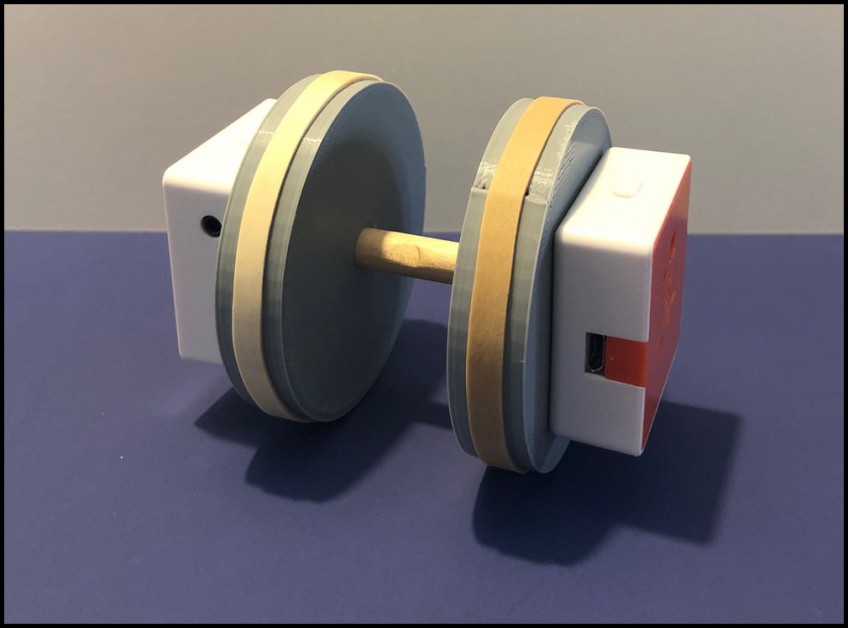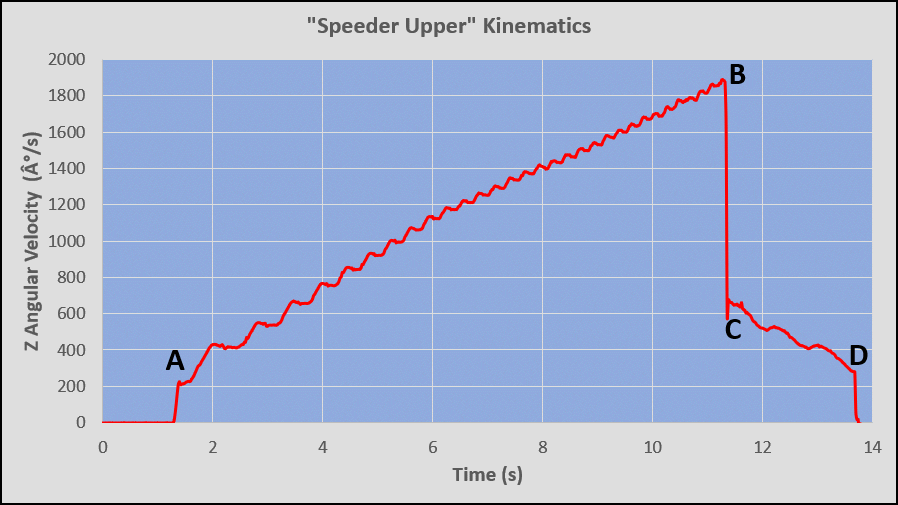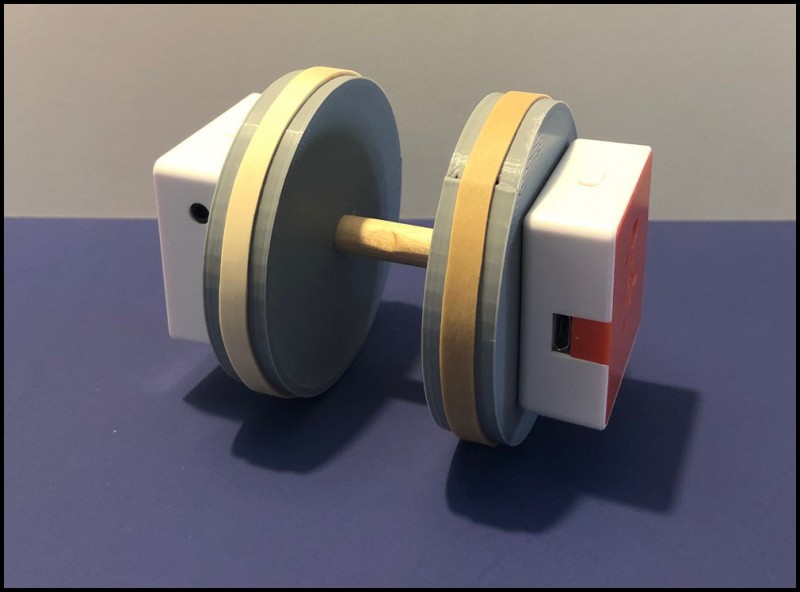What's a "Speeder Upper"?
As shown in Figure 1, a "Speeder Upper" is a pair of disks that are connected by a short rod of much smaller radius. The NSTA science ruler gives you a feel for the dimensions of the Speeder Upper. The disks are 0.5" thick and 2.5" in diameter and are connected by a short 5/16" diameter wood dowel rod. The 3D printer stl file for the disks is provided with this lesson in the event that you want to make a Speeder Upper for use in your physics classroom.

The 10-second video below shows the Speeder Upper in action. It is placed on a meter stick ramp with its disks overhanging the ramp. The disks have been equipped with tires in the form of rubber bands. The Speeder Upper is released, and it rolls down the ramp. When the tires contact the tabletop at approximately the 70 cm position of the meter stick, the Speeder Upper suddenly takes off with a much higher speed -- thus the name Speeder Upper! This result certainly catches the eye, and may be surprising to some.
PocketLab Voyager is a perfect device for the physics student to use in the analysis of the physics behind the Speeder Upper. As shown in Figure 2, PocketLab Voyagers are attached to each of the disks with removable double sided tape. However, only one of the Voyagers is used for data collection--the other just helps to balance the Speeder Upper.

Questions for Student Investigation of the "Speeder Upper"
The students should make use of z-angular velocity data from the PocketLab app in their experimental analysis. A typical graph of z-angular velocity versus time for the Speeder Upper is shown in Figure 3. It is important that the ramp is not too high, as this could make the angular velocity reach or exceed the maximum angular velocity (approximately 2000 degrees/second) detectable by Voyager.

- Explain what is happening during each of the following regions of the graph of Figure 3 -- region A to B, region B to C, region C to D.
- Why is there a fairly regular but small periodic variation in the angular velocity during the interval from A to B?
- What is the angular velocity in rad/s of the Speeder Upper just before making contact with the table top?
- What is the translational speed of the Speeder Upper just before making contact with the table top?
- What is the angular velocity in rad/s of the Speeder Upper just after making contact with the table top?
- What is the translational speed of the Speeder Upper just after making contact with the table top?
- Discuss the physics of why the translational speed increased when the Speeder Upper contacted the table top.
The remaining questions deal with energy considerations concerning the Speeder Upper. They are intended for the more advanced physics student who is familiar with rotational dynamics and moment of inertia.
- How much gravitational potential energy does the Speeder Upper have when it is released from the top of the ramp, with the table's surface taken as the zero of gravitational potential energy?
- What is the translational kinetic energy of the Speeder Upper just before it makes contact with the table top?
- What is its rotational kinetic energy just before it makes contact with the table top?
- What is the total kinetic energy just before making contact with the table top?
- How does this total kinetic energy compare to the gravitational potential energy it had at the top of the ramp? Why the difference?
- What is the translational kinetic energy of the Speeder Upper just after it makes contact with the table top?
- What is its rotational kinetic energy just after it makes contact with the table top?
- What is the total kinetic energy just after it makes contact with the table top?
- How does the total kinetic energy before contact with the table top compare to that after contact? Why the difference?
A Similar Lesson Involving the PocketLab Hot Rod

